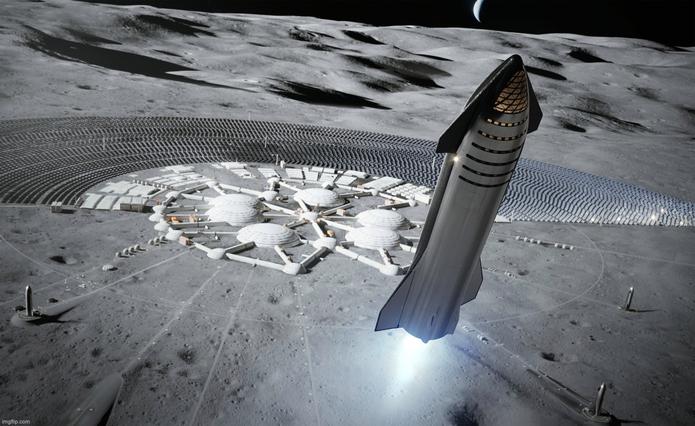By akademiotoelektronik, 28/03/2022
Back to the Moon: by choosing SpaceX, NASA is betting on the future
SpaceX engineers are now the best in the world at designing, building and flying innovative new rockets. However, to go to Mars, since that is the ambition of the company, building large rockets will not be enough. SpaceX will indeed need to rely on other capabilities necessary to ensure the survival of humans on the red planet. This is where NASA comes in. 
The agency has indeed been carrying out studies on deep space missions for decades and has also been working on the problems of recycling air, water and other consumables on board the ISS for years, while that in these areas, SpaceX has only limited experience.
In addition, any human mission to Mars will raise planetary protection issues and other international concerns. A government agency will also be needed to, for example, facilitate the development of nuclear energy on the planet Mars. Having NASA alongside SpaceX could therefore help solve all of these challenges.
The SLS problem

A question then arises: why is NASA funding a launch system that will directly compete with its SLS booster? It's still not very clear. For now, the SLS and its Orion spacecraft are still expected to be an essential part of the Artemis architecture. And for good reason, the development of these structures provides jobs in the fifty American states and supports hundreds of small businesses. On the other hand, the Starship is rather perceived as a “job killer” program, from the point of view of Congress.
Also, under the current plan, we will have to deal with three structures. A Super Heavy rocket will launch a Starship into lunar orbit. A few days later, an SLS rocket will launch a crew inside an Orion spacecraft that will dock with the Starship around the Moon. The crew will be transferred to the Starship which will drop them on the Moon. For the return, it will be the same principle.
However, this "threesome" may only be temporary. Ultimately, if the Starship is capable of transporting humans to the Moon directly from Earth, it is indeed difficult to imagine NASA encumbered with budgets of more than two billion per mission, while supporting a limited number of occupants. on board.
Related Articles